Why do the Portuguese light fires on Christmas Day?
What is Consoada?
When do children unwrap presents?
What are typical Christmas sweets called?
Let’s take a closer look at how Christmas is celebrated in Portugal!
When is Christmas celebrated in Portugal?
Christmas in Portugal is celebrated on Christmas Day, December 24, when the family gathers for Christmas Eve dinner. After the meal, people go to church for the Missa do Galo or Rooster Mass. During the service, a picture of baby Jesus is brought out, and everyone lines up to kiss him. The image is then placed in the nativity scene that every church has.
Merry Christmas is Feliz Natal in Portuguese, and although this is the most common way to express Christmas wishes, you can also say boas festas or happy holidays.
Who brings the children’s presents?
Father Christmas, or Pai Natal, brings gifts to Portuguese children on Christmas Day, not Christmas Day. He leaves gifts for them under the Christmas tree or in his shoes by the fireplace. However, some people claim that Santa Claus carries the presents rather than Father Christmas.
Before leaving for the service, the parents secretly place the baby Jesus in the manger in the home nativity scene and put the gifts under the Christmas tree. After returning from church, the children run to check the nativity scene because no baby Jesus means no presents.
In some families, gifts are unwrapped at two times; the children can unwrap a few gifts after midnight mass and most in the morning.
Do you know Portuguese Christmas traditions?
One of Portugal’s most famous Christmas traditions is the Bananeiro de Braga or Banana Tree of Braga. This fairly modern tradition started around 40 years ago when a few friends gathered in the old Casa das Bananas pub in the city of Braga on December 24th.
The aim was to wish everyone a Merry Christmas with a glass of Moscatel de Setúbal served with a banana. The tavern was once a fruit warehouse, so the owner and his son decided to serve their alcohol with bananas, bringing the two sides of the business together.
Today, people still gather at the pub every December 24, as it is almost a duty to go to Casa das Bananas, or Bananeiro as most people call it, and have a glass of Moscatel and a banana, bought at the bar or brought from home.
The Madeiros de Natal also marks Christmas in Portugal, or Fogueiras do Galo, and large bonfires are traditionally lit on Christmas Eve. They are usually lit around midnight after the Missa do Galo to “warm the feet of Jesus” and are supposed to burn all night. How are these fires related to pagan celebrations honoring the winter solstice?
Caretos de Varge is part of an old tradition in Trás-os-Montes, specifically in Varge. On December 25, unmarried village boys run around town dressed as Caretos with pagan masks, jumping, shouting, and teasing to create chaos and the illusion that winter is leaving. In addition, they go from house to house and receive carols.
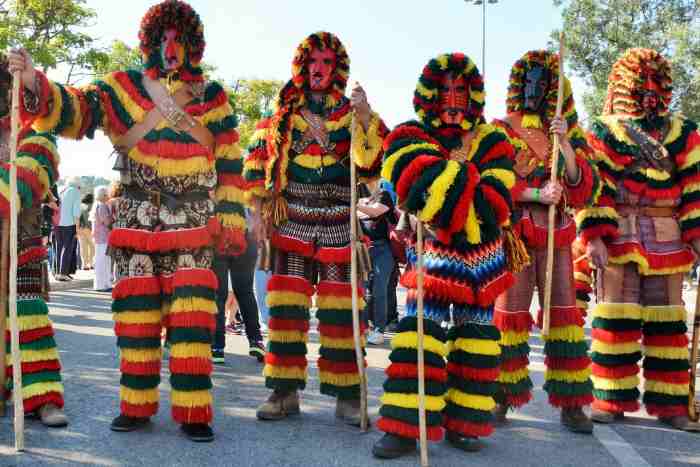
Discover similar tips
What is eaten in Portugal at Christmas?
A classic Christmas Eve meal is called Consoada. According to tradition, Consoada consists mainly of boiled cod with potatoes, eggs, and cabbage. It is served with a hot sauce made of olive oil, garlic, and vinegar. However, each Portuguese region has its traditions regarding cod, and other dishes may also be served.
For example, Christmas Eve dinner in the North often consists of boiled octopus. In the Algarve, some people eat seafood. And across the country, it’s common for a turkey or rooster to appear on the Christmas Eve table.
The traditional Christmas dessert is Bolo Rei, which means king cake and is placed in the center of the table. It is a round-yeasted dessert similar to our Christmas. In the past, people would hide a small metal egg or bean in it. Whoever found it while consuming it was called a king and blessed with good fortune.
Christmas in Portugal is not complete without fried rabanadas. They are consumed either with milk or port wine.
Sonhos, filhoses, and bilharacos are names for traditional Portuguese sweets. Get ready for fried, cinnamon-sugar-dusted dough balls. Depending on the region, they can only be made with flour, carrots, or pumpkins.
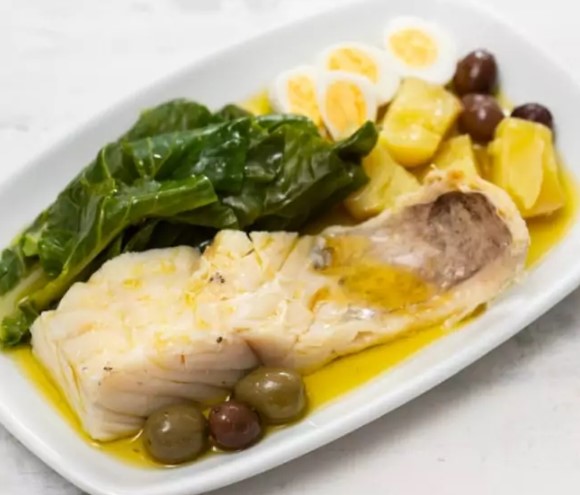
How to bake your rabanadas?
Legend has it that this dish was created thanks to the ingenuity of a mother who was so poor that she had nothing to eat and was, therefore, unable to breastfeed her newborn child. When she was offered a few slices of stale bread, milk, sugar, and eggs, she prepared this delicacy.
In connection with this legend, it is also believed that this dish helps produce breast milk and aids in postpartum recovery, which is why it is offered to pregnant and postpartum women today.
Ingredients:
- few slices of white bread
- 1 cup of milk
- 1 cup of port wine
- 3 tablespoons of sugar
- 1 tbsp of honey
- 2 eggs
- 2 sticks of cinnamon
- lemon peel
- handful of sultanas
- handful of walnuts
- a handful of pine nuts
- frying oil
Method:
- Cut the pastry into 0,6 inches-thick slices.
- Sweeten the milk with two spoons of sugar.
- Add the cinnamon stick and lemon zest.
- Mix and heat on fire.
- Turn off the heat and dip the bread slices one by one into the hot milk.
- Pour off the excess milk using a ladle and a spoon and press the slices of bread between them.
- Dip the bread slices one by one in well-beaten whole eggs and fry them in hot oil.
- Turn the slices often during frying and drain them on paper towels after golden.
- Add a spoonful of sugar, honey, cinnamon, lemon zest, chopped walnuts, sultanas, and pine nuts to the port wine.
- Mix well and bring to a boil over low heat.
- When the syrup starts to boil, let all the alcohol evaporate and switch off.
- Place a bottom layer of rabanadas on a high-rimmed plate, drizzle with warm syrup, create another layer of rabanadas, drizzle with syrup, and so on.
If you want, you can make a simpler, classic version of rabanadas and just sprinkle them with sugar and cinnamon.
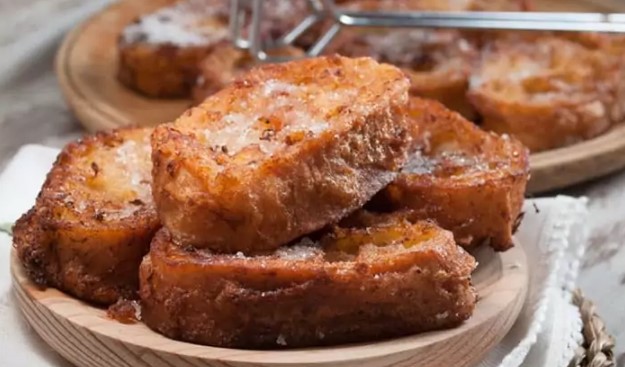
What places to visit in Portugal at Christmas?
Portuguese cities attract tourists to rich Christmas decorations full of lights that give them a magical atmosphere.
- Lisbon—we can’t talk about Christmas in Portugal without mentioning the capital. Lisbon is beautiful at Christmas. The most interesting places include the Christmas markets in Rossio Square and Campo Pequeno Arena. Another popular Lisbon Christmas attraction is Wonderland Lisboa, which takes place in Eduardo VII Park and resembles London’s Winter Wonderland.
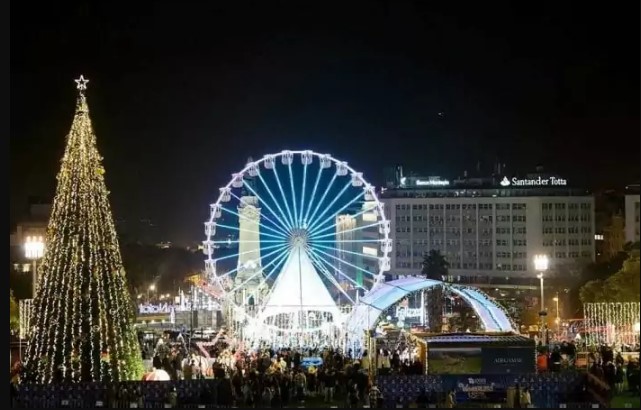
- Porto—This famous city in the north of Portugal offers a real Portuguese Christmas. In addition to the huge Christmas tree that stands every year on Avenida dos Aliados, other popular attractions include the Rotunda da Boavista ice rink and the Christmas markets at Ateneu Comercial do Porto or Praça da Liberdade.
- Braga—this city has been known for its religious significance for centuries. It was an important pilgrimage stop and provided refuge for many believers. One of the main events in Braza is the Presépio de Priscos or the living nativity scene. It is among the largest in Europe, and more than 600 people participate in it every year.


 Milan & Ondra
Milan & Ondra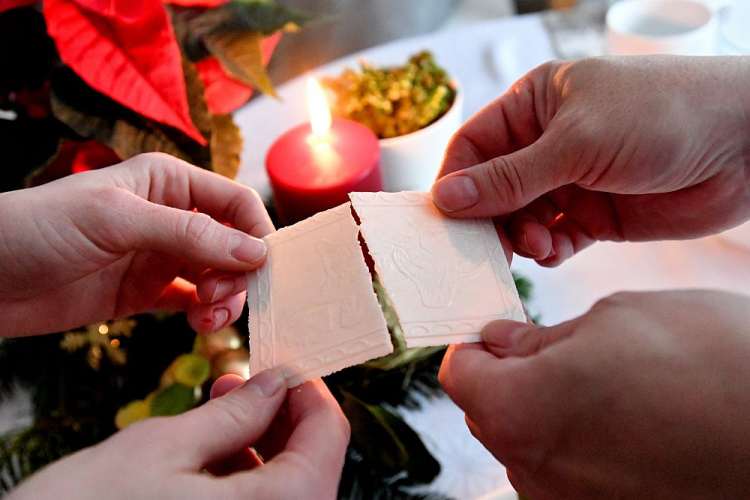
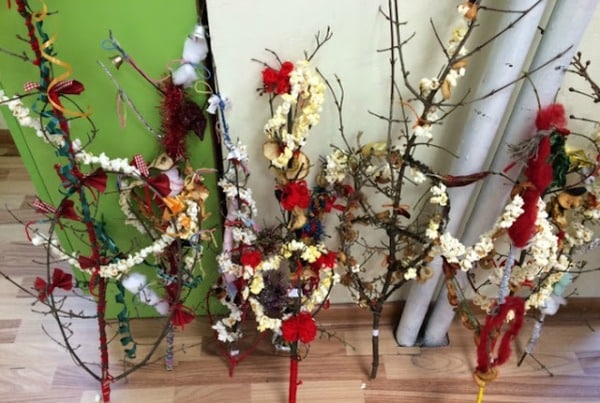
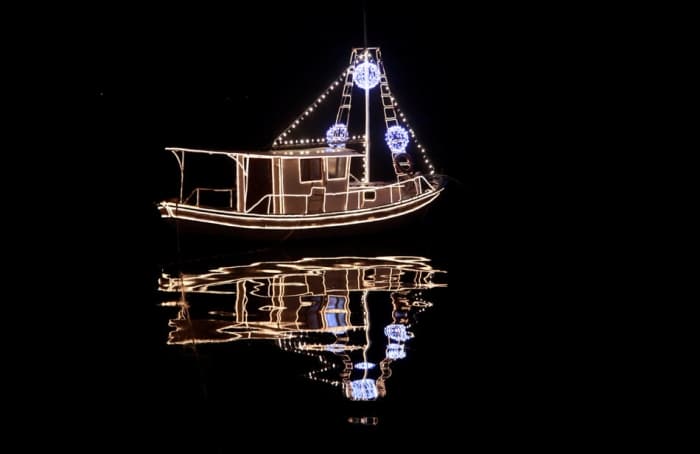
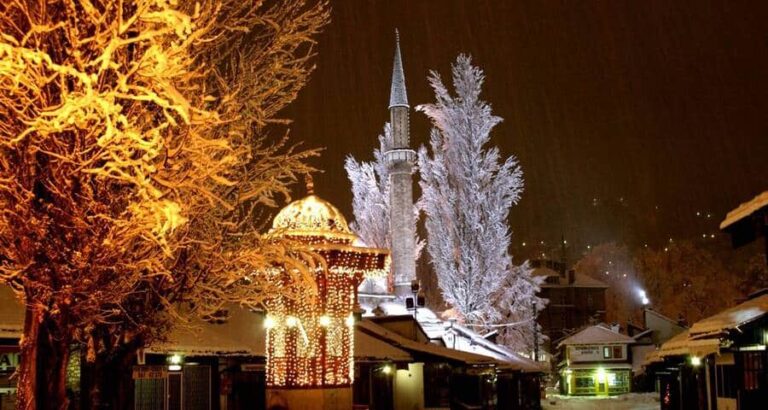
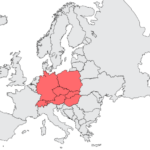 Central Europe
Central Europe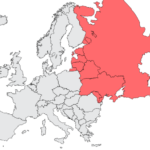 Eastern Europe
Eastern Europe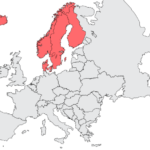 Northern Europe
Northern Europe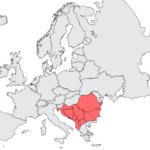 Southeast Europe
Southeast Europe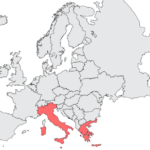 Southern Europe
Southern Europe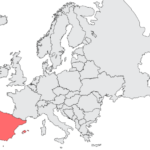 Southwestern Europe
Southwestern Europe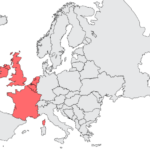 Western Europe
Western Europe